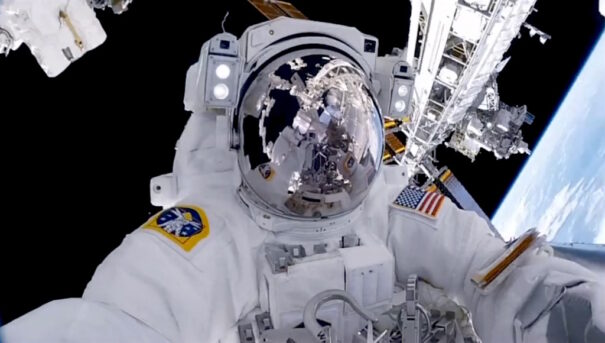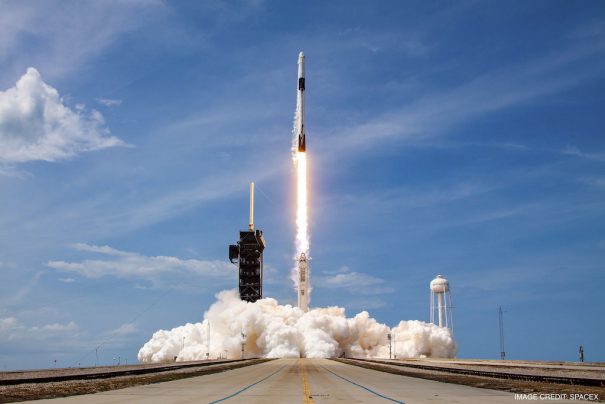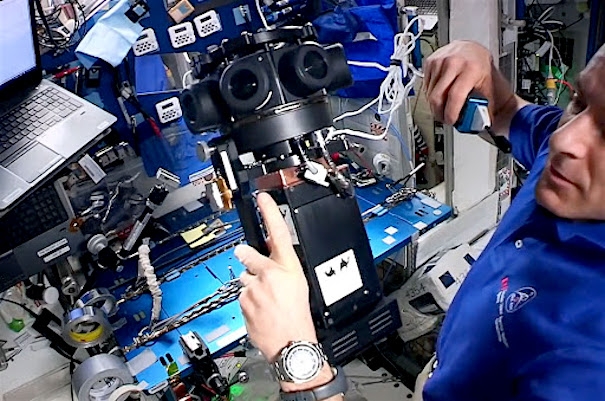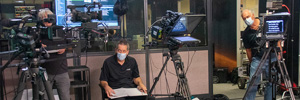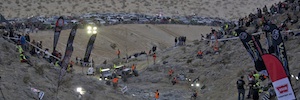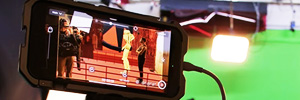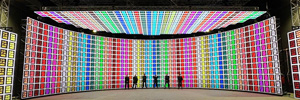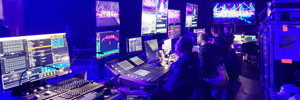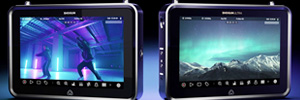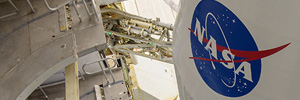La NASA enviará señales 4K en directo desde la Estación Espacial Internacional
Por el momento, el vídeo a bordo de la ISS se captura en 4K, enviando los paquetes de archivos a Tierra, y emitiendo en directo señales HD. Ahora trabaja ya para explorar la infraestructura técnica necesaria que permita enlaces descendentes de 4K en vivo.
Carlos Fontanot, Imaginary Manager of ISS (NASA), ha compartido las experiencias que la Agencia Espacial Estadounidense está llevando a cabo de cara a captar el esplendor de la Tierra y el Espacio, así como la vida a bordo de la Estación Espacial Internacional (ISS), con el más mínimo detalle.
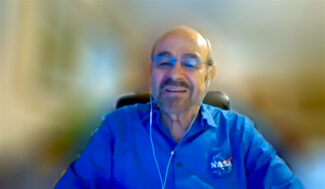 En un momento en el que se cumplen veinte años desde que los humanos habitamos de forma continuada en el espacio, la agencia tiene en sus miras volver a la Luna y viajar a Marte. “Sin duda, serán momentos únicos para ser captados en Ultra Alta Definición”, ha comentado Fontanot.
En un momento en el que se cumplen veinte años desde que los humanos habitamos de forma continuada en el espacio, la agencia tiene en sus miras volver a la Luna y viajar a Marte. “Sin duda, serán momentos únicos para ser captados en Ultra Alta Definición”, ha comentado Fontanot.
Desde 2015, la Estación Espacial cuenta con cámaras RED Digital Cinema, utilizando actualmente la RED Helium para captar Ultra Alta Definición con calidad cinematográfica. Ahora, se encuentra certificando la RED Komodo como nueva cámara de cine digital abordo de la estación a partir del próximo año. También cuenta con cámaras más pequeñas como el camcorder Canon XF705.
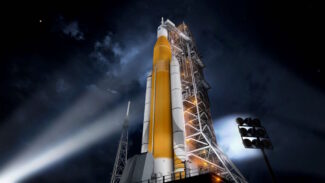 Aunque, por el momento, el vídeo a bordo de la ISS se captura en 4K enviando los paquetes de archivos a Tierra, las señales en directo son HD. Ahora trabaja ya para explorar la infraestructura técnica necesaria que permita enlaces descendentes de 4K en vivo. Posiblemente, como ha reconocido Fontanot, la primera experiencia en directo coincida con el lanzamiento del Artemis 1 en 2021. Artemis 1 es una misión no tripulada, primera del programa Artemisa que saldrá al espacio gracias a un pionero sistema de lanzamiento.
Aunque, por el momento, el vídeo a bordo de la ISS se captura en 4K enviando los paquetes de archivos a Tierra, las señales en directo son HD. Ahora trabaja ya para explorar la infraestructura técnica necesaria que permita enlaces descendentes de 4K en vivo. Posiblemente, como ha reconocido Fontanot, la primera experiencia en directo coincida con el lanzamiento del Artemis 1 en 2021. Artemis 1 es una misión no tripulada, primera del programa Artemisa que saldrá al espacio gracias a un pionero sistema de lanzamiento.
Los programas Orion, SLS y Exploration Ground Systems son elementos fundamentales del programa Artemisa, comenzando con Artemis 1, el primer vuelo de prueba integrado de Orion y SLS el próximo año. Artemis 2 seguirá como la primera misión humana, llevando a los astronautas al espacio más lejos que nunca… Marte.
SpaceX Crew Dragon
Después de 9 años, la NASA y sus socios comerciales están nuevamente enviando humanos desde los Estados Unidos. Un dedicado equipo de videógrafos, ingenieros y storytellers trabajaron para capturar el despegue y aterrizaje de un momento histórico en UHD, la misión SpaceX Crew Dragon.
Para ello se emplearon 4 drones que dieron cobertura al prelanzamiento y la actividad de la tripulación antes de embarcar a bordo de la nave. Otros 4 drones siguieron el lanzamiento desde la plataforma. Numerosas cámaras 4K cubrieron imágenes desde diferentes ángulos, otra cámara 4K trackeo el amerizaje al finalizar la misión y otro drone 4K cubrió el contacto con el mar.
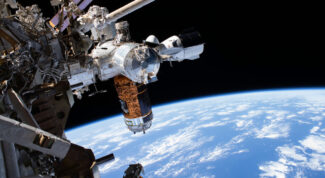 En la misión se emplearon también otras cámaras como las F55 de Sony con lentes Canon CN7x17 KAS S Cine-Servo o una Sony HDC-P50 con un objetivo Canon JK20x8.2B sobre una dolly robótica Agito en un carril dos metros.
En la misión se emplearon también otras cámaras como las F55 de Sony con lentes Canon CN7x17 KAS S Cine-Servo o una Sony HDC-P50 con un objetivo Canon JK20x8.2B sobre una dolly robótica Agito en un carril dos metros.
Las señales procedentes de la cámara Dolly y los drones fueron grabados en un AJA KiPro Ultra.
La siguiente misión que la NASA capturará en Ultra Alta Definición será Orion. El vehículo de próxima generación tripulado con la que la Agencia volverá a la Luna. Actualmente se están usando cámaras UHD para documentar las pruebas del vehículo, capturando vídeo de alta calidad para el archivo histórico.
Fontanot ha destacado también que la Agencia cuenta con un flypack equipado con tres cámaras UHD que puede trasladarse donde sea necesario para captar imágenes UHD. Este flypack consta de tres cámaras Canon XF-506, un mezclador Blackmagic ATEM Television Studio Pro 4K, and MacBook Pro con el software ProPresenter and Blackmagic UltraStudio UHD Mini para grafismo, varios grabadores UHD Shogun Inferno, y un mezclador digital QSC TouchMix-16 de 16 canales.
Carlos Fontanot ha señalado que mucha de la producción que lleva a cabo la NASA en 4K puede verse a través de su canal, disponible de forma gratuita a través de satélite, así como por la aplicación de Harmonic en Roku.
The ISS Experience
Felix & Paul Studios, creadora de experiencias de entretenimiento inmersivo, y Time Studios, la división de televisión y cine de Time, han estrenado el Episodio Uno de la innovadora serie inmersiva en UHD, The ISS Experience, coincidiendo con el 20º aniversario de la presencia humana a bordo de la Estación Espacial Internacional.
Esta primera entrega ha sido producida en colaboración con el Laboratorio Nacional de los Estados Unidos de la ISS, la NASA, la Agencia Espacial Canadiense y otras agencias espaciales involucradas con la Estación Espacial Internacional y fue filmado completamente a bordo de la ISS usando la Cámara Espacial especializada en 3D y realidad virtual de 360 grados de Felix & Paul Studios. Esta serie inmersiva de cuatro capítulos es la mayor producción jamás filmada en el espacio.
El primer episodio de The ISS Experience se ha estrenado en formato móvil de 360° en tabletas y teléfonos inteligentes con capacidad 5G a través de las principales compañías de telecomunicaciones. También se estrenará en formato de cúpula completa de 360 grados en varios planetarios de todo el mundo.
Para la grabación del video 3D 360º UHD en interiores se empleó una Z Cam V1 Pro customizada. Los archivos proxy de baja resolución se bajaban para su revisión antes de que los discos duros con el video en RAW fueran devueltos a la Tierra. El siguiente paso será capturar una vista 3D de 360º de los paseos espaciales a principios de 2021.
Y es que, como ha subrayado Carlos Fontanot, “la Ultra alta resolución es muy importante a la hora de explorar el espacio, y llevar a cabo experimentos, tanto para la historia como para fines científicos y tecnológicos”. Precisamente, en lo que a historia se refiere, la NASA ha comenzado a remasterizar algunos de sus fondos guardados en película.
Did you like this article?
Subscribe to our NEWSLETTER and you won't miss a thing.



